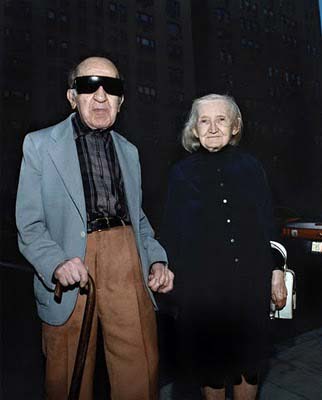There’s a theory, there’s always a theory

Gaze direction affects judgements of facial attractiveness
Much is known about the attractiveness of physical attributes, such as symmetry and averageness. Here we examine the effect of a social cue, eye-gaze direction, on facial attractiveness. Given that direct gaze signals social engagement, we predicted that faces showing direct gaze would be preferred to faces showing averted gaze.
Thirty-two males completed two tasks designed to assess preferences for female faces displaying a neutral expression. Participants were more likely to select the face with direct gaze, when choosing the more attractive face from direct- and averted-gaze versions of the same face.
This direct-gaze preference was stronger for high-attractive than low-attractive face sets, but was present for both. Attractiveness ratings were also higher for faces with direct than averted gaze. Interestingly, stimulus inversion weakened the preference for inverted faces, which suggests the preference does not simply reflect a bilateral symmetry bias.
{ Visual Cognition/InformaWorld }
Gaze bias: Selective encoding and liking effects
People look longer at things that they choose than things they do not choose. How much of this tendency—the gaze bias effect—is due to a liking effect compared to the information encoding aspect of the decision-making process? (…)
Colour content (whether a photograph was colour or black-and-white), not decision type, influenced the gaze bias effect in the older/newer decisions because colour is a relevant feature for such decisions. These interactions appear early in the eye movement record, indicating that gaze bias is influenced during information encoding.
photo { Morad Bouchakour }


